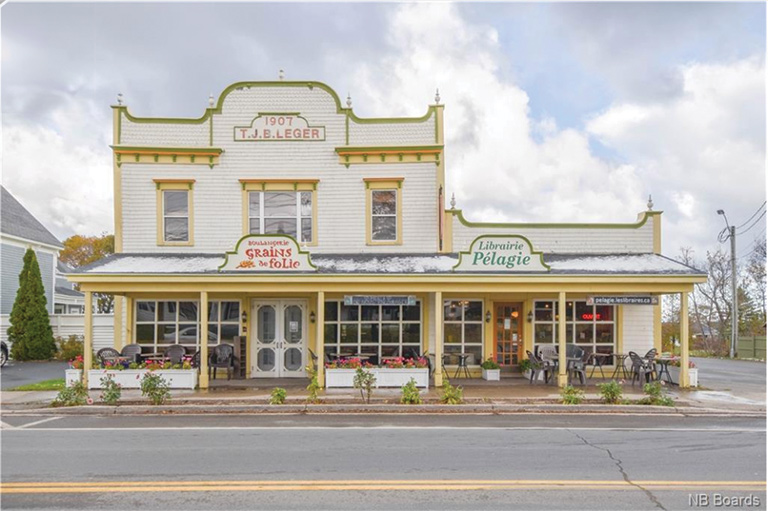Beautifying New Brunswick

The Acadian town of Caraquet in New Brunswick is known for its magnificent view of Chaleur Bay. But along the town’s main boulevard a visitor’s eyes are also drawn to the understated beauty of several buildings. There are cozy, wood-clad heritage homes decorated with detailed mouldings; a busy café whose elegant front window hints at its hundred-year history; and an artists’ workshop that’s bursting with colour. These buildings share a common origin: an architect who inspired the people of the Acadian Peninsula with his quest for beauty, Nazaire Dugas.
Born in Caraquet on July 26, 1864, Dugas was one of New Brunswick’s architectural pioneers. In the early 1880s he moved to Montreal. During his twenty years in Montreal he trained as a carpenter, studied architecture, and directed several construction projects in the region.

In 1896, while still living in Montreal, he began designing houses to be built on the Acadian Peninsula and partnered with his brother Henri to purchase a sawmill and shingle mill in Caraquet. In 1902, Dugas moved back to Caraquet with his wife and children. The brothers added a flour mill, a woodworking shop, and a door, window, and moulding factory, all operating together under the company name H. & N. Dugas. Unfortunately, the entire complex went up in flames in the summer of 1946, four years after Nazaire Dugas’s death.
Dugas was the master builder in charge of several major construction projects in the region. Organized and meticulous, he kept an almost daily record of the goingson in his community, including births, notable visitors, weather events, and more. Sporting a distinctive moustache, Dugas was also known for his gifts as a storyteller.
Dugas left an important architectural legacy in communities across northeast New Brunswick, where his work can be seen in several iconic buildings that form part of the local collective identity: churches, colleges, convents, schools, businesses, and hotels. His works include the church in Bas-Caraquet, which burnt down in 2018, as well as an expansion of the convent of the Soeurs de la Congrégation Notre-Dame in Caraquet, which was destroyed by fire in 1995. The stone ruins of the latter building now serve as a backdrop for outdoor cultural events.

Over time his buildings — which were often at the centre of local community life — were adapted to a wide variety of uses including as a general store, a bed and breakfast, a hotel, a place of worship, an educational facility, a telephone exchange, an eco-museum, a café-bakery, and an artist’s residence. His one-and-a-half-storey family home — designed by Dugas in the Arts and Crafts style — remains intact. The non-profit organization Nordais Collectif, based in New Brunswick’s Acadian Peninsula, is creating a project called “Nazaire Dugas redux” to highlight Dugas’s work. Nordais Collectif is funding the project with a $50,000 grant it received as a winner of Canada’s History Society’s new John Bragg Prize for Atlantic Canada.


With 7 uniquely curated newsletters to choose from, we have something for everyone.
We hope you’ll help us continue to share fascinating stories about Canada’s past by making a donation to Canada’s History Society today.
We highlight our nation’s diverse past by telling stories that illuminate the people, places, and events that unite us as Canadians, and by making those stories accessible to everyone through our free online content.
We are a registered charity that depends on contributions from readers like you to share inspiring and informative stories with students and citizens of all ages — award-winning stories written by Canada’s top historians, authors, journalists, and history enthusiasts.
Any amount helps, or better yet, start a monthly donation today. Your support makes all the difference. Thank you!
Themes associated with this article
Advertisement
Save as much as 40% off the cover price! 4 issues per year as low as $29.95. Available in print and digital. Tariff-exempt!









